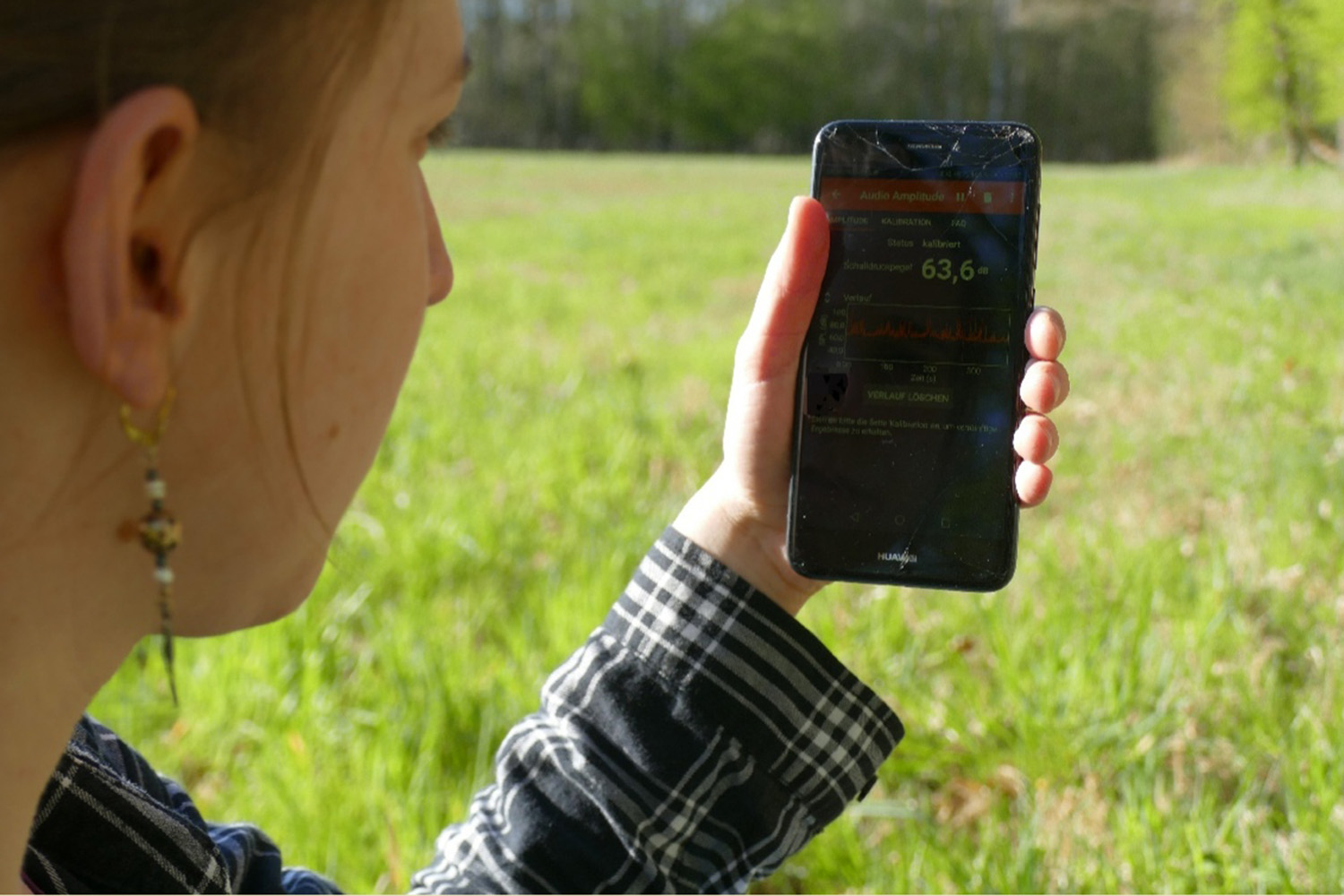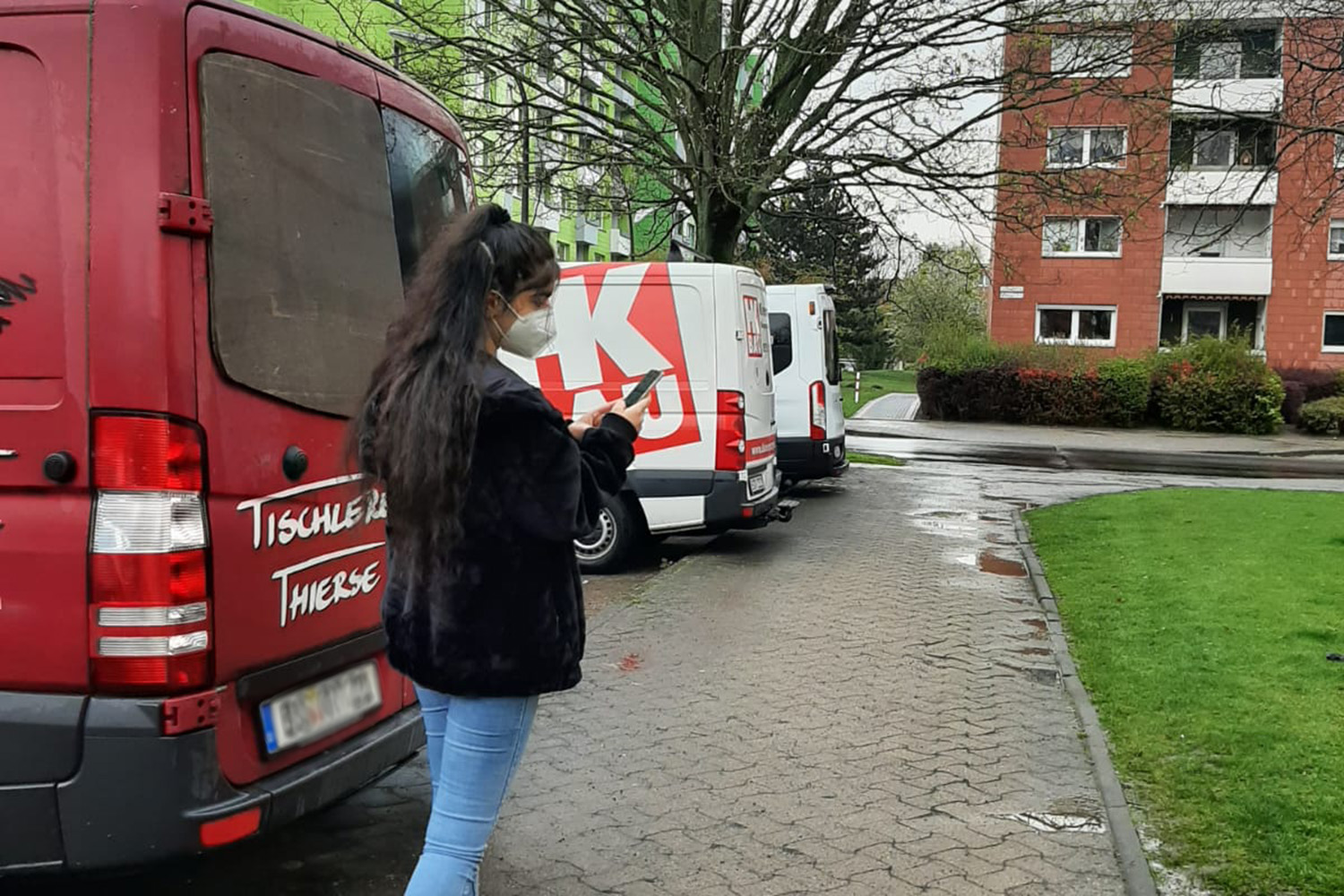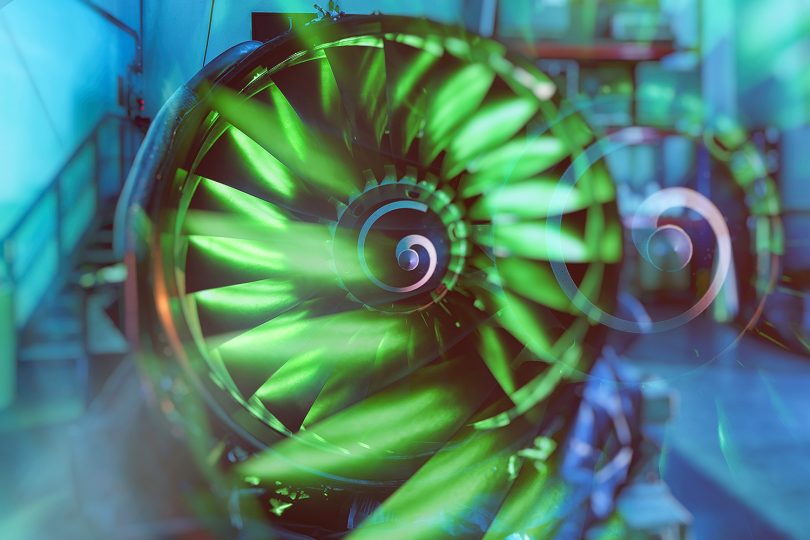Acoustic Treasure Hunt SE²A research club "changING" explored the world of acoustics
How we perceive sounds is subjective. Why is the lawnmower annoying, while the sound of a waterfall delights us? This question is being investigated by scientists working in the field of psychoacoustics – a branch of acoustics that is being researched at the Institute for Acoustics (InA) at the TU Braunschweig, among many others. The pupils of the “changING” research club of the SE²A cluster of excellence – Sustainable and Energy-Efficient Aviation – at TU Braunschweig experienced that the world of acoustics is not always just about numbers.

Pupil Linda measuring the sound pressure level with a smartphone app. Picture credits: Linda/TU Braunschweig.
Dr. Katharina Völkel and Fiona Gottschalk, research assistants at the InA, together with the “changING” team led by M. Sc. Dina Al-Kharabsheh, research assistant at the Institute for the Didactics of Natural Sciences at the TU Braunschweig, came up with an exciting idea to get the pupils excited about acoustics research: a soundwalk with measuring experiments and a quiz.
Before they went on an acoustic treasure hunt, the programme included theoretical basics: starting with the question “How do we hear – the anatomy of the ear” to “What is sound? How is a sound wave created and how does it propagate?” to topics such as sound impression, auditory surface and sound pressure level.
Then it was time for the pupils to switch off their PCs and experiment on their own – a welcome change from online lessons and screen work in pandemic times. Using two apps downloaded onto their smartphones, the students went on a scavenger hunt: they had to measure sound pressure levels at various stations with their smartphones.
Dealing with outliers
In the subsequent workshop, the measurement data was analysed together. The measured values for the stations bus stop, street, park, supermarket, workplace, resting and sleeping place, favourite place were noted down, averaged and the question of how to deal with outlier values was discussed. Did the measuring device make a mistake? Or was there a single event, such as a sudden dog barking in the house, which explains the increased value?
No big surprise: according to the measurement data, the supermarket is the noisiest place. But: The assumption that it is particularly quiet at the favourite place was not confirmed – if the pupils’ favourite place is at the piano or in the horse stable, as in this experiment. Despite objectively high values, the noise environment is experienced as relaxing.
This is what the pupils say

The pupil Hana on a soundwalk through Braunschweig. Picture credits: Hana/TU Braunschweig.
Linda: “I enjoyed the soundwalk. In addition to the measurements we took, there were a lot of quizzes on different topics. In the end, I learned quite a lot and got a better feeling for how noisy it actually is in my everyday life. If you’re a bit interested in science, the changING programme is a cool way to learn new things and especially meet people who are also passionate about it.”
Hana: “With the changING team, I have learned a lot. On the one hand about the topic of acoustics. but also about 3D printers and how to programme something for this printing. The changING team is always open to questions and ideas. Participating in this was a nice experience and I enjoy the time with the team, even if it can unfortunately only be done via PC.”
About “changING”
The research club “changING” of the Cluster of Excellence SE²A – Sustainable and Energy-Efficient Aviation – at TU Braunschweig started for the first time in October 2019. Pupils from the 10th grade onwards get the chance to do their own research and experiments. They also learn about technical courses of study and professions in the research focus “Mobility” at TU Braunschweig in a practical way. The aim of changING is also to get girls in particular interested in technical topics. The pupils are accompanied until they graduate from high school if they want to stay with the project for the entire four years.

